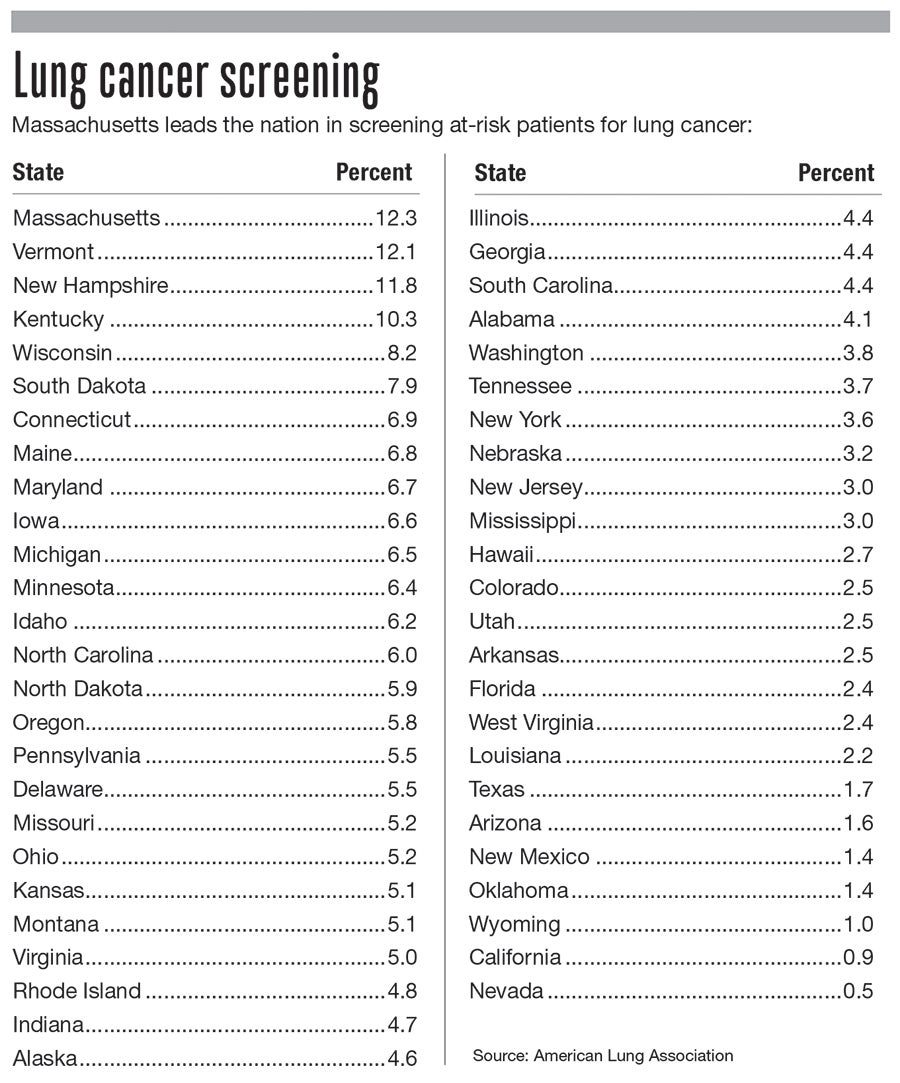More than five decades ago, the first U.S. surgeon general’s report warned against the health hazards of smoking. But it wasn’t until much more recently screening for lung cancer became a reliable tool. The Harrington HealthCare System is on the forefront.
Get Instant Access to This Article
Subscribe to Worcester Business Journal and get immediate access to all of our subscriber-only content and much more.
- Critical Central Massachusetts business news updated daily.
- Immediate access to all subscriber-only content on our website.
- Bi-weekly print or digital editions of our award-winning publication.
- Special bonus issues like the WBJ Book of Lists.
- Exclusive ticket prize draws for our in-person events.
Click here to purchase a paywall bypass link for this article.
It was 55 years ago this year the first U.S. surgeon general’s report warned against the health hazards of smoking. But it wasn’t until much more recently screening for lung cancer became a reliable tool, with a major 2011 study published in the New England Journal of Medicine indicating an ability to find potential lung cancer through a CT scan early enough for a high survivability rate. With one out of four Southbridge adults smoking – among the worst in the state – the Harrington HealthCare System saw an opportunity in its hometown to make a major difference, launching in 2015 a screening program for current and former smokers. Screenings, which take about 10 minutes, are available with a doctor’s referral seven days a week at Harrington’s Southbridge campus and Monday through Friday at its Webster site. Jean Comeau, as the program’s navigator since January 2018, tracks each patient from referral through any needed follow-up appointments after a screening.
Why is it so important to screen for lung cancer?
A huge national study found early screening can find cancers early and allow us to treat them, and the prognosis would be excellent. Of the 1,200 or so screens we did last year, 2% came back positive. Of those, 65% were Stage 1, and Stage 1 is early enough to have an excellent prognosis. One nice thing about this program is we have a comprehensive team working with Beth Israel Deaconess Medical Center radiologists in Boston, so if someone has a screening come back positive, we’re able to completely take care of them. We don’t have to say, “Go to Boston. Go to Worcester. Go to Springfield.” We can take care of them here.
Do many smokers or former smokers otherwise not often get screenings?
It’s not as commonplace as mammograms or colonoscopies. There’s a great number of people out there who still don’t know we can do this. Lung cancer screening came into fruition just very recently, there were few places doing it, and it wasn’t initially covered by insurance. Then the Centers for Medicare & Medicaid Services said they would cover the costs, and there would be no co-pay for an annual screening.

Is outreach and education an important component too, then?
It’s still so new, it requires a lot of effort to be out there to tell people. As far as educating the public and educating providers and anyone who wants to listen to me, it’s a huge piece of my job. I need to be out there and letting people know we’re here and this scan is not going to cost them any money. I have models we use, a healthy lung and a cancerous lung, and we’ve taken them places. Adults will say, is that really what my lung looks like when I smoke?
Is there much awareness today?
There still needs to be a lot of education out there. We’ve been working with primary care doctors to make sure they know more about the need to have screenings. Like with anything else, education is key. I’ve gone to doctor’s offices and physicians meetings to let them know and to tell them about our results. We have excellent, excellent results.
How much has Harrington’s screening program increased in scope?
We’ve grown exponentially. From an initial 369 screenings that first year, and this past year, we had 1,280 scans for the fiscal year ending Sept. 30. In the most recent year, we had a 15% increase in the number of new patients coming to us.
This interview was conducted and edited by Worcester Business Journal News Editor Grant Welker.

